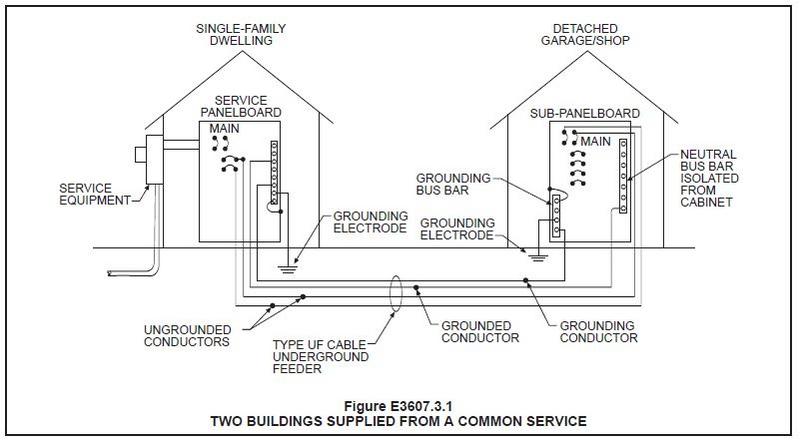I would use your plan 3 with some adjustments
Your plan to use the existing 2" PVC conduit to the shed is the soundest plan out of the three you've put forth. Running extension cords long distances is just asking for them to get damaged by things, so plan 1 is out. Furthermore, plan 2 would require you to either field-punch a KO somewhat below where you're describing or use the existing 2" KO, but neither of these are particularly practical places for a conduit to exit based on the outdoor picture shown, with the existing KO being a worse option as it'd force you to route the new conduit over the top of the utility's service duct to get to the shed.
However, there are a few things we need to take into account here. First off is the factor of conduit fill. Fortunately, your 2" schedule 80 PVC supplies 742mm² of fill, and you're only using 74.71*3 + 53.16 = 277.29mm² of that so far, which leaves you with ample space for a set of 3 10AWG THHNs for the generator inlet wiring.
With matters of physical space addressed, we then can move onto the next issue, namely ampacity adjustment, as we now have 4 current-carrying conductors in the conduit versus the 3-conductor case Code ampacity tables are based on. This means that we have to limit the 2AWG THHNs to 80% of the ampacity rating they would otherwise have. However, NEC 310.15(B) lets us base that adjustment on the 90°C rating of THWN-2 wire, vs. having to start with the 75°C rating that we're limited to by the terminating equipment here. As a result, we can use the 130A 90°C rating of 2AWG THWN-2 as our basis here, taking 80% of that to get us 104A. Since your shed subpanel is 100A anyway, and 15-30A circuits aren't affected by ampacity adjustment until you get up to 9 current-carrying conductors due to the way ampacity adjustment interacts with the 240.4(D) small conductor rules, we're all good on this front.
The good news is that since we're dealing with a sub-15kW portable generator here, NEC 702.12(B)(2) exempts us from having to provide a disconnect for the generator feeder at the shed:
(B) Portable Generators 15 kW or Less. Where a portable
generator, rated 15 kW or less, is installed using a flanged inlet
or other cord- and plug-type connection, a disconnecting
means shall not be required where ungrounded conductors
serve or pass through a building or structure.
So, you can simply run a 10/3 cable out the back of the generator inlet box and into the shed subpanel, where it connects with the aforementioned 10AWG THHN feeder wires in the house-to-shed conduit.
Once you get the feeder back to the house, though...
The more significant divergence, though, comes when your generator feeder makes it back to the house. Since your generator was designed to be suitable for portable usage, it bonds its neutral wire to the generator frame. This is fine and dandy provided it's being used as a standalone source of power; however, it means you can't use it with a normal breaker interlock, as doing so would cause a case of Two Neutral-to-Ground-Bonds Bickering, with potentially deleterious results.
Instead, you need to use a transfer means that switches the neutral, and that limits your options severely. If you wish to stay in Eaton CH, Eaton thankfully makes switching neutral transfer panels (CH10GEN5030SN), but those are limited to 10 spaces for branch breakers, and are relatively pricey/scarce on the ground. The alternative would be to use a Reliance Controls Panel/Link X series transfer panel; these are available in 10-space models as well (XRK0503C/D), and support a variety of 1" breakers (QP, MP, HOM, BR) in addition to being a bit less pricey than the Eaton panels, but are also in limited supply due to a recent model/design change. With either solution, though, you can use the transfer panel to feed a downstream main lug subpanel using either a subfeed block or the transfer panel's own main lugs; this also opens you up to using a panel with fewer spaces of its own, such as the XRH0503D, which might be less expensive than getting the spaces in the transfer panel.
If you want to kit something together yourself instead of buying a premade panel, your options are even more limited: Square-D discontinued most of their switching neutral breakers, BR switching neutrals are too double-stuff-ish to work with interlock kits, Siemens doesn't make 30A switching neutral breakers for their loadcenters to begin with, and GE doesn't make branch-breaker to branch-breaker interlocks for their panels. While Eaton does make CH switching neutral breakers and an interlock (CHML) that fits them, they don't make a suitable retainer for such a setup as the CHPHD can only be used with the uppermost breaker positions. You might be able to use a CHPMIKCH cover-mount interlock kit, but I'm not sure how the retainers for those work, either.



